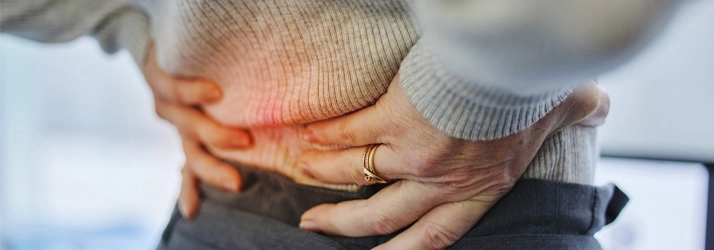Why You Hurt When The Weather Changes in Austin TX
Why You Hurt When The Weather Changes in Austin TX

Many people complain to our Austin TX chiropractors that they have increased pain right before a significant weather change. This typically involves a cold and/or wet front arriving in a day or two. This pending weather change is accompanied by a drop in barometric pressure and often an increase in humidity. These people earn the unwanted reputation as a weather forecaster because they hurt in certain joints in characteristic ways. And you may be one of them. Some patients can actually predict rain, cold, and various combinations thereof. Their family members ask them if they need an umbrella that day. It’s no coincidence that they hurt in the same places repeatedly. It could be a knee, toe, low back, neck, or a headache. And then after the front actually arrives, the pain is better. This weather forecasting ability is a skill most people would like to lose, so let me shed light on the cause of the problem and some solutions. Why is that? Hint: the pain almost always afflicts areas that were previously injured.
What Is The Cause To This Sensitivity In Austin TX?
The cause of this heightened sensitivity has to do with the way we heal after trauma. After trauma to spinal and extremity joints, from car crashes, falls, sports injuries, etc., the body has to heal the strained, sprained, and bruised tissues. Incidentally, strain/sprain is a nice way of saying tear. The degree of tearing of the tissues determines how well the body heals, and how long it will take. Healing always occurs in 3 stages: Inflammation, then proliferation (scar formation), and finally remodeling of the scar tissue. This entire process can take up to a year. The end result is always scarring of the tissues and scarred tissues are inherently weaker, stiffer, and more pain sensitive. This increased sensitivity is due to the process of repair, when the body grows new, small nerves, called neurofibrils into the damaged tissues. These neurofibrils act as project managers to organize the healing of torn fibers, and then the removal of the debris (swelling) after the job is done. These new nerves are different and far more sensitive than typical nerves. These nerves do not go away, even after the area is healed. This is why the area is now very sensitive. In fact, this condition is called Denervation Super Sensitivity.
It's believed that changes in barometric pressure and humidity— which happen as weather systems change — trigger painful sensations in joints. Less air pressure surrounding the body can allow nerves, muscles, tendons, joint capsules, discs, and other tissues around joints to expand. Since these scarred tissues are less flexible, weaker and more sensitive, the result is pressure on joints, leading to pain.
There's Good New
The good news is that there are solutions to help manage these painful joints. It turns out that motion is the single best thing to help decrease pain and stiffness. This applies to both recent and older injuries. After an injury, controlled motion helps the tissues heal and remodel with a stronger, better scar. Human instinct is to immobilize an injured area, but this is one time when our instincts are wrong. Fractures should be immobilized, but almost every other injury will benefit from slow, easy stretching, exercise, and adjustments.
If the injury is older, it’s not too late for motion to give relief. So, when the cold front approaches and you are in pain, exercise and stretches will help! The more consistent you are, the better you will feel. Using ice also helps reduce pain and inflammation. And eating anti-inflammatory foods always helps reduce inflammation.
And finally, the best way to restore motion to a fixated joint is an adjustment. Adjustments restore alignment and motion so that joints move easily, with less pain. The adjustment affects the deep tissues of the joint, not just the superficial. This is why we should all have a spinal check-up after any trauma or impact, and regular care to maintain. A spine in alignment works better, forms less scar tissue and ages better.
In Summary
- Adjustments: Restore alignment and motion to fixated, painful joints
- Exercise & Stretches: Pump fluid in and out of joints, stretch muscles, joints move better
- Anti-Inflammatory Diet: More vegetables, fruit, lean protein and less carbohydrates
- Ice: Reduces swelling and pain
Monday
9:00am - 1:00pm
3:00pm - 6:00pm
Tuesday
9:00am - 1:00pm
Wednesday
9:00am - 1:00pm
3:00pm - 6:00pm
Thursday
9:00am - 1:00pm
Friday
Closed
Saturday & Sunday
Closed
Chiropractic Arts Center of Austin, P.C.
4131 Spicewood Springs Rd L-3
Austin, TX 78759



